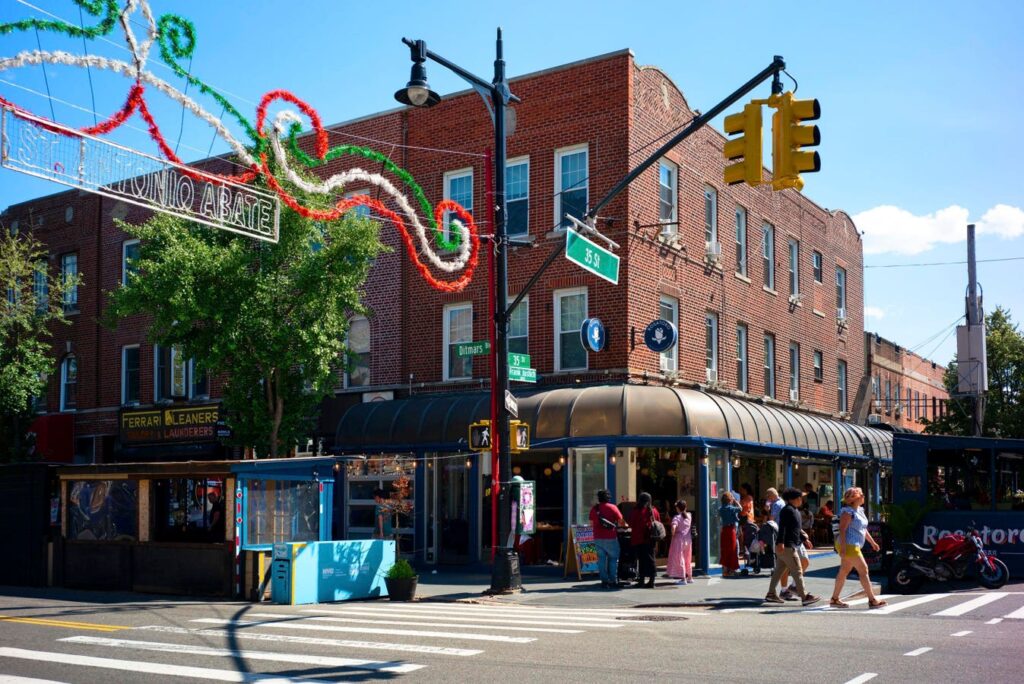Legend has it that John Jacob Astor, for whom the enclave was named, never actually set foot within the New York City neighborhood of Astoria. No matter. These days lots of other folks are stepping into this West Queens bailiwick, drawn by qualities that include a burgeoning foo
d scene, a location highly proximate to Manhattan, a beguiling history and most of all, Astoria’s comparative affordability vis-à-vis neighboring districts.
“There has been a huge influx of people coming in from Long Island City who are priced out of Long Island City and decide their next move is Astoria,” says Arlinda Dine, executive vice president of marketing at Modern Spaces NYC, a full-service real estate firm founded in neighboring Long Island City. “We’ve also seen people coming in from Brooklyn with the same issue, who will switch jobs and move.”
Food for thought
In its “Elliman Insider” blog, real estate brokerage firm Douglas Elliman not so long ago termed Astoria vibrant and desirable, and appealing to a widely diverse group of buyers. Culture, recreation, history, farm-to-shelf foods, green space and a neighborhood feel were all touted by the Insider as among the prime advantages of a life lived in Astoria.
Nobody knows the neighborhood and its restaurant vibe quite like Costas Karalekas, owner of Sanford’s. The restaurant traces its lineage in Astoria back to the 1930s, and his family’s ownership of the restaurant extends to the post-Bicentennial Year of 1977.
“Gus” Karalekas not only grew up in Astoria, but has managed the restaurant for years, giving him a unique perspective on the evolution of the enclave. “As the caliber of food within the area has gone up, the number of trendier restaurants has also increased,” says Karalekas, who converted his eatery from coffee shop to diner to restaurant to whisky bar, eventually seeing it named one of America’s Best Bourbon Bars in 2022.
“Several unique, smaller independent restaurants are replacing many of the restaurants who had been skating by over the years,” he continued. “This in turn has led to the quality of the food within the area increasing.”
Suburban lifestyle
For many newcomers arriving to join Astoria’s 154,000 residents, one lure is a slower, more suburban pace that stands in sharp contrast to the vibrant electricity of Manhattan. This despite the fact the two are separated by only a few stops on the subway line.
Another is that buyers and renters gain more for their dollars in Astoria. Even though prices have shot up in the past year, rising double digits from the low $700s to low- to mid- $800s, they still appear comparatively affordable compared to the boroughs of Manhattan and Brooklyn. Some have compared the relative affordability of Astoria today to that years ago in Williamsburg, Brooklyn, which was seen as a close-in refuge from Manhattan’s high costs, until its own skyrocketing prices dimmed that luster.
Along with the numbers of people migrating to Astoria have come a few other changes.
“We’ve seen the caliber of buildings as well as developers and residents change in a positive way,” Dine says. “It’s evident through the buildings’ structures that developers are more focused on design regarding both exteriors and interiors. Developers have been coming in and making adequate changes to meet the needs of both people who wanted to live here but ultimately decided Astoria didn’t meet their needs, and people coming in looking for more than what Astoria previously had to offer.”
After its affordability, proximity to Manhattan, history and culinary attractions, yet one more significant driver bringing newcomers to Astoria likely is its East River waterfront. “I see limitless potential for the Astoria waterfront,” Dine says. “Not only potentially turning Astoria into the next Williamsburg, but the next DUMBO.”
Read the full article here

